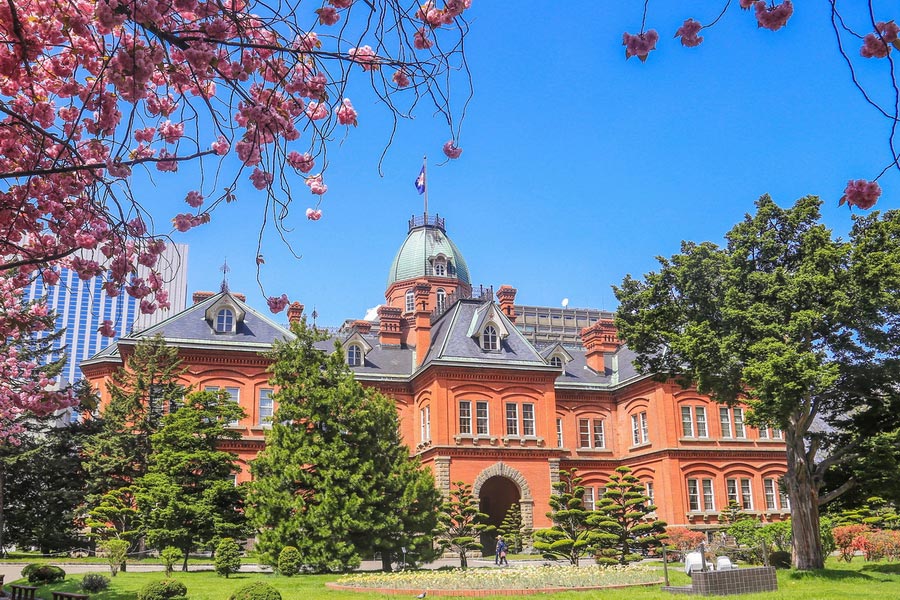Tours, Attractions and Things to Do in Sapporo
Sapporo Travel Guide
The capital of Hokkaido and the fifth largest city with a population of over 1.9 million, Sapporo is the northernmost among Japan’s main islands. It is renowned for its volcanoes, snow, onsens (hot springs), and food – especially seafood. Snow Festival and Sapporo beer also draw both domestic and international tourists. Sapporo caters to the ski resorts only 60 minutes away from the city and an exhilarating ice diving experience starting in February. Visitors may also want to hike the mountains during mild summers or discover hidden beach gems.
The question that often arises when discussing this city is, “Is Sapporo worth visiting?” In this Japan travel guide, we’ll review the main highlights that define Sapporo, from landmarks and top attractions to museums, local dishes, and much more!
History of Sapporo
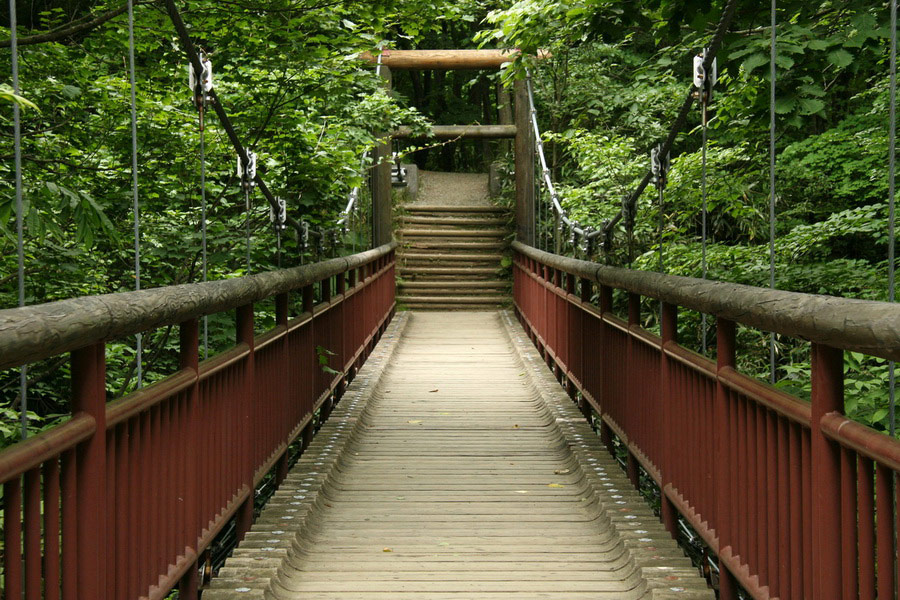
The Meiji Period (1868-1912) was a starting point for the Hokkaido Island exploitation. Before Sapporo’s foundation, the Ainu, the ancient people of Japanese islands, had inhabited the area. In 1866, the Meiji officials initiated the digging of the canal, and many people from other regions moved to Hokkaido. The migrants set up the village, dubbing it Satporopet, which means “Dry, Great River” in the Ainu language.
Consequently, Sapporo became an administrative center for Hokkaido's development, so the capital’s history dates back to exactly that moment.
Sapporo City follows the architectural design of Shima Yoshitake, a founding colonial magistrate responsible for the city's development during the Meiji Period. The central part of Sapporo stretches along Odori Avenue, splitting the capital into northern and southern sections. The streets and quarters run like a chessboard in a grid pattern.
Sapporo saw rapid advancement and urban upgrades as the city prepared for the 1972 Olympic Games. The project covered a new subway network, an underground shopping complex, and road rehabilitation. Sapporo continued to be a city hosting different game competitions, from the 2002 FIFA World Cup and the 2019 Rugby World Cup to the Asian Winter Games.
Best Time to Visit Sapporo
Sapporo’s climate showcases distinct seasonal changes, offering something special throughout the year. Hokkaido receives heavy snowfall in winter, and the Sapporo Snow Festival draws nearly two million visitors annually, turning the city into a winter wonderland. Spring brings the blossoming of sakura, signaling renewal, while the Yosakoi Soran Festival celebrates the arrival of summer with vibrant performances. Summer, from June to August, offers mild temperatures perfect for outdoor activities and festivals. Autumn is ideal for visiting hot springs and admiring the vibrant fall foliage. Whether it’s skiing in winter, hanami in spring, festive summers, or relaxing autumn retreats, Sapporo’s seasons offer unique experiences year-round.
Things to Do in Sapporo
Landmarks and Attractions in Sapporo
The capital of the northern district of Japan, Hokkaido, is home to incomparable nature and urban entertainment. Here are the best attractions to experience in Sapporo for your Japan travel undertaking.
Hokkaido University Sapporo Campus
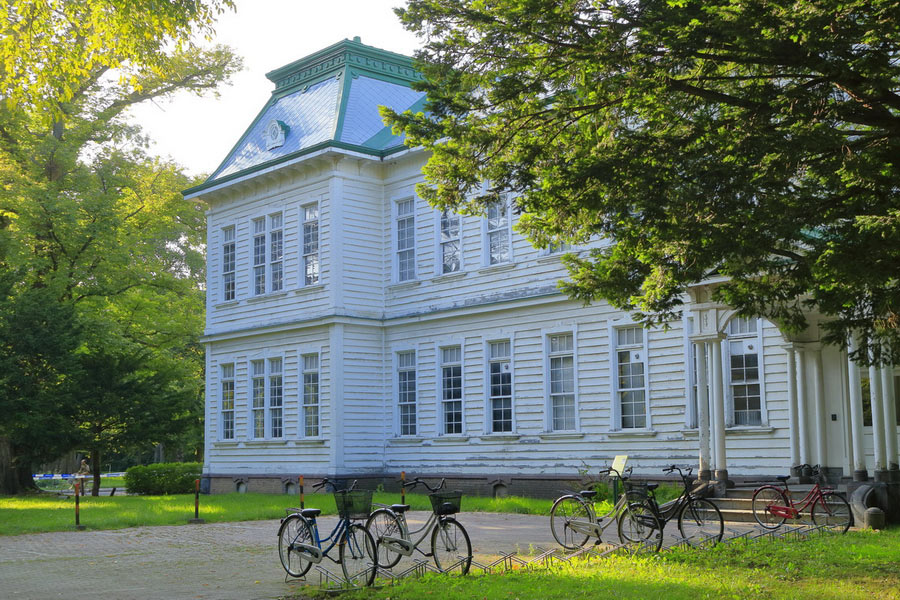
It’s a bit surprising that Hokkaido University Sapporo Campus is open to foreigners as one of the Japanese attractions. But it is pretty obvious why. The campus has plenty of green space to appreciate its stunning architecture, peaceful gardens, and fascinating museums.
Sapporo Beer Museum
The Sapporo Beer Museum gives a fascinating glimpse into the history and brewing process of one of Japan's oldest and most iconic beers. Tourists can learn about the company's founding, see the original brewery equipment, and sample various beers, including the famous Sapporo Lager.
Hokkaidō Jingū
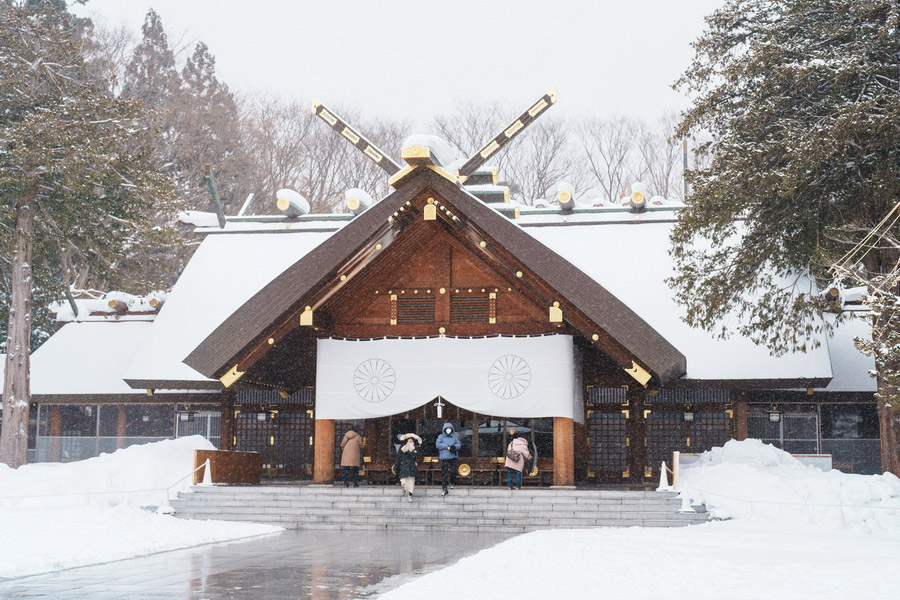
Hokkaidō Jingū is a Shinto shrine in Maruyama Park near the zoo park. Dedicated to the kami of the island of Hokkaido, the shrine is a popular place for locals and newcomers alike to pray for good fortune and prosperity. It is equally beautiful during the Sakura blossoming period and winter.
Historical Village of Hokkaido
The Historical Village of Hokkaido is an open-air museum covering the history and culture of the region. The village includes a collection of traditional buildings, farmhouses, shops, and temples, which have been well-preserved to give anyone a peek into the past.
The Former Hokkaido Government Office Building
The handsome Former Hokkaido Government Office Building in Sapporo demonstrates impressive architecture and history. Constructed in 1888, this iconic red brick building, which the locals call “Akarengais” (the Japanese “red brick”), is an important cultural property that looks great when lit up at night.
4 of the Most Scenic Sapporo Views
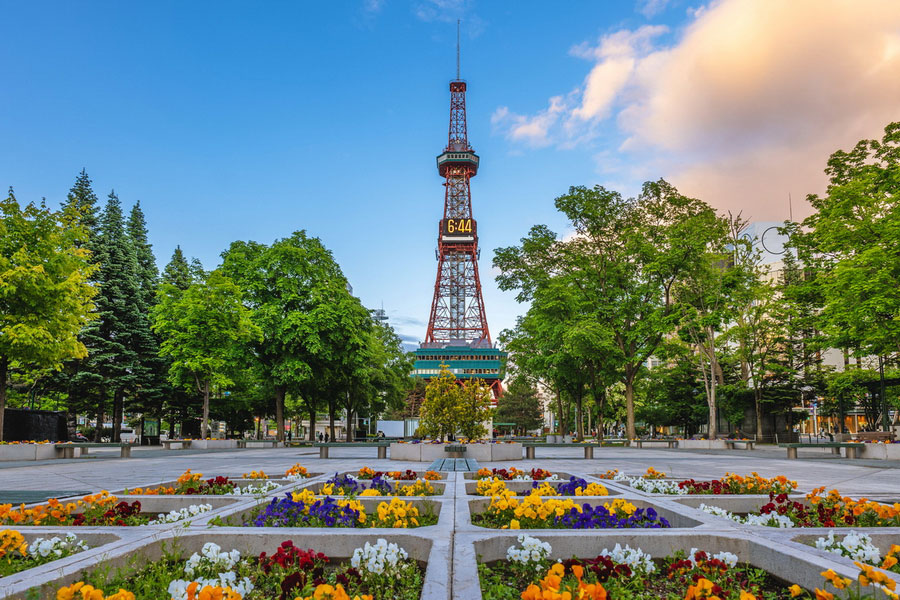
With greenery landscapes in warm seasons, lush parks, and the city's peculiar architecture, you can’t question the beauty of Sapporo. While no photo can resemble the city’s beauty, you won’t have difficulty finding views worth your Instagram.
To help you get the perfect shot, here are 4 of the most panoramic views of Sapporo.
1. Mount Okura Observatory
One of the highest points in Sapporo, Mt. Okura Observatory, provides a fantastic view of the city, including picturesque Odori Park. During the 1972 Winter Olympics, Mount Odoti hosted ski jump competitions. The Sapporo Olympic Museum at the foot of the hill jump has an impressive display of the Olympic events, including simulation speed skating, hockey, and ski jump. The museum admission fee for an adult is ¥600.
2. Mt. Moiwa
To get to Mt. Moiwa, drive 20 minutes away from Sapporo. A cable car ride promises spectacular views of nature, the city of Sapporo, and Ishikari Bay.
The mountain rises 531 meters above sea level and can be an excellent place for the city night view on its summit. At the foot of Mt. Moiwa, there’s a forest considered a national natural monument. The lucky ones might be able to spot Ezo squirrels and red foxes along the driveway encircled by the lush green forest.
The ropeway is open daily from 10:30 am (winter 11 am) until 10 pm.
3. Sapporo JR Tower Observation Deck T38
Another place to enjoy panoramic 360-degree views of Sapporo from a 160-meter height is the JR Tower Observation Deck on the 38th floor. The Sapporo Train Station connects to the deck. It has a cozy café where visitors can treat themselves to Sapporo beer or watermelon drink. Besides, a souvenir shop offers a wide selection of T38 original items.
4. Sapporo TV Tower
The same architect, Tachu Naito, who designed the Tokyo Tower, is also the author of the Sapporo TV Tower, built in 1957. Its observation deck rises 90.38 meters above sea level.
The tower has a few shops and cafes on its three lower floors. In addition to these levels, it has a basement with several noodle shops. Food enthusiasts will find ramen, zangi-style fried chicken, and other delicacies here. The basement level also leads to the underground shopping street Aurora Town, which will give tourists a glimpse of the broader Sapporo Chikagai underground network it belongs to.
The observation deck in Odori Park is typically the most visited place during the Sapporo Snow Festival. Both daytime and nighttime views will provide any visitor with an exciting experience.
The adult admission fee is 1000 yen and 500 yen for children.
Things to Do in Sapporo in Summer
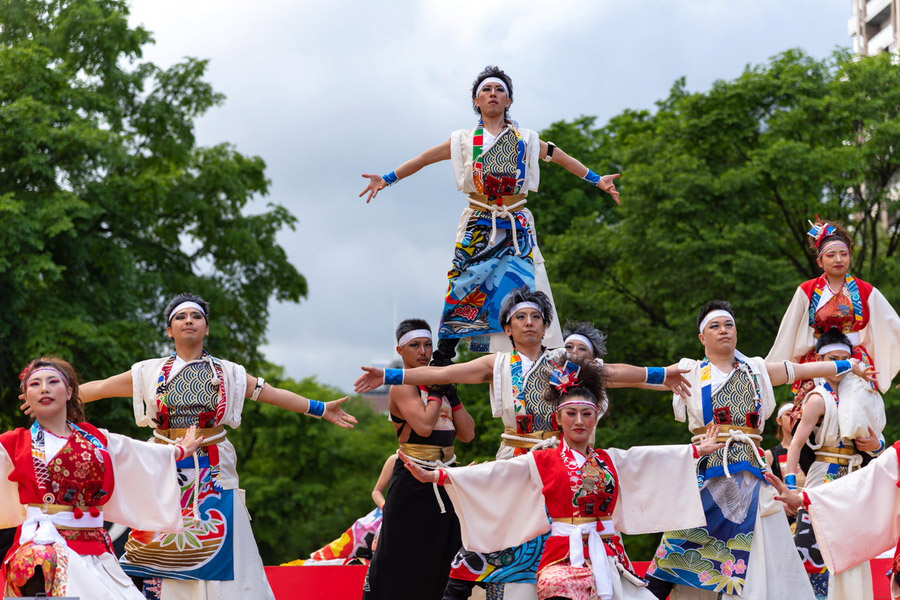
Thanks to the mild climate, summer in Sapporo is a highly festive season, making it a popular destination to witness the unique culture of Japan. Furthermore, the city prides itself on beautiful beaches, adventurous hiking spots, and over a century-old tradition of horse racing.
Sapporo Festivals
In summer, Sapporo turns into a city of celebrations and fireworks. No holiday is complete without them. The number of launched fireworks at summer festivals is always staggering. The Hokkaido Music Fireworks Festival starts on June 14 and lasts until June 16, kicking off the season of spectacular events. During the Hokkaido Makonamai Music Festival, around 20,000 shells and fountains are shot high into the night sky, illuminating Makonamai Park and its surroundings. In mid-July, music connoisseurs amass for the Sapporo City Jazz Festival and Pacific Festival. And on July 26, vacationers can join the glowing Doshin UHB Firework Festival (Toyhira River Fireworks), while rock fans can attend the Rising Sun Rock Festival in mid-August.
Hokkaido Beaches
Hokkaido beaches may not be as good as other tropical paradises, but they are a true wonder with diverse ecosystems that can’t be found elsewhere. For example, the Hokkaido coast is part of the San’inKaigan UNESCO Global Geopark.
The nearest beach to Sapporo is Asobeach, a 40-minute drive from Sapporo, but those who want to relax their toes in the sand and swim in Sapporo can do that in Moerenuma Park.
Hiking
For nature enthusiasts, the Sapporo outskirts render many hiking routes in the mountains of Hakkenzan, Soranumadake, Muruyama, and Moiwama. Mt. Makkenzan is perfect for beginners, while a challenging trail on Mt. Soranumadake will reward brave climbers with a breathtaking view from its summit.
Horse Racing
Even without betting, watching the Hokkaido Serries run by the JRA Horse Racing every summer can make your day in Sapporo. This tradition of horse racing dates back to 1907. It has a strong international presence both in the competition and the attendees.
Rafting and Canoeing in Sapporo
Sapporo affords exciting opportunities for rafting and canoeing during the warmer months. The Niseko Adventure Center, for example, organizes river cruises and mountain biking, including canoeing and rock-climbing competitions.
Things to Do in Sapporo in Winter
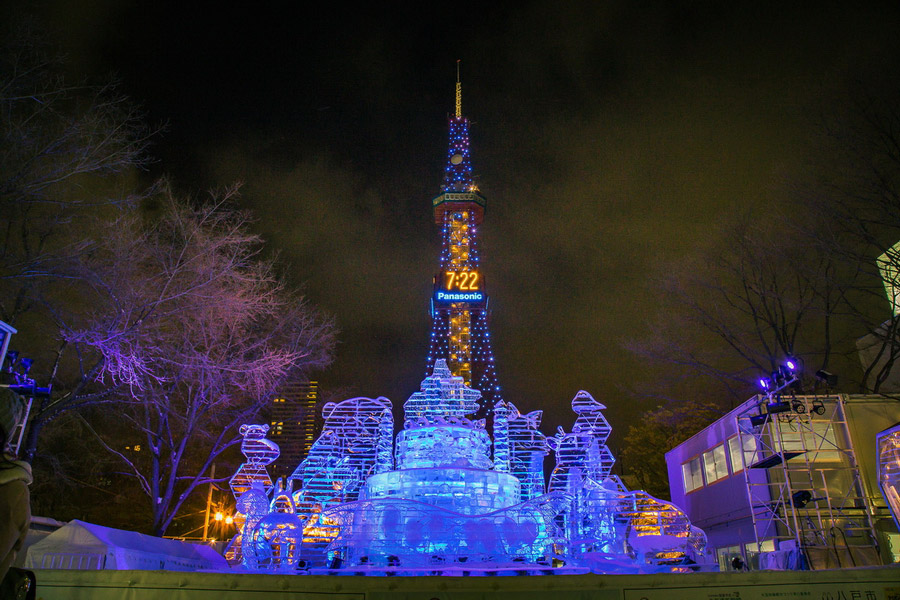
Sparkling with lights and surrounded by snow-covered mountains, a trip to Sapporo in winter promises plenty of interesting activities during the coldest months of the year.
Just an hour's drive from Japan’s northern city, a skiing resort, Sapporo Kokusai, will delight any skier and snowboarder. Travelers to Japan looking for a bigger venue can head further to Niseko, the most popular skiing destination among foreigners.
After a day full of muscle-stretching activities or a winter sightseeing walk, relaxing in a Japanese hot spring – onsen - will soothe and warm a tired body. The closest onsen to Sapporo Kokusai Ski Resort is Jozankei Onsen, attracting over 2 million people every year.
Starting in November and continuing until December 25, Sapporo’s Odori Park evinces Christmas illumination and market leading up to Christmas Eve. The famous Sapporo Snow Festival marks the beginning of February - an impressive display of ice sculptures in Odori Park, Susukino, and Tsudome.
Sapporo Museums
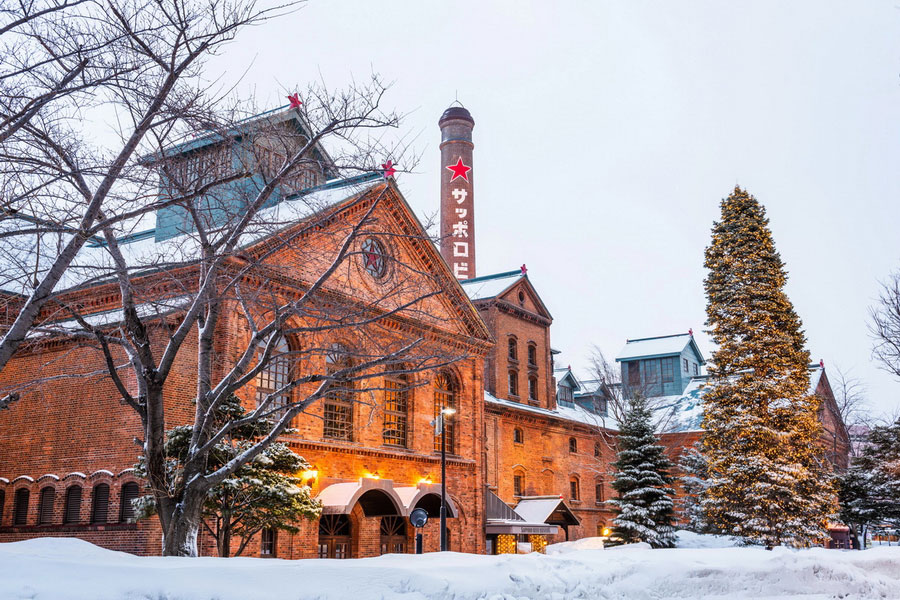
A curious visitor to Sapporo will want to learn about the city and Hokkaido’s rich history and vibrant art scene. The Sapporo Beer Museum, for example, tells the story of the beloved Sapporo Beer, while at the Historical Village of Hokkaido, guests can imagine the traditional way of life.
The Hokkaido University Museum reveals the institution’s extensive research and discoveries, while the artworks of the Sapporo Art Museum boast local and international artists. Likewise, the Hokkaido Museum Morino Charenga introduces history zealots to the Ainu, the original inhabitants of Hokkaido with Polynesian background.
Entertainment, Parks, and Shopping
Parks
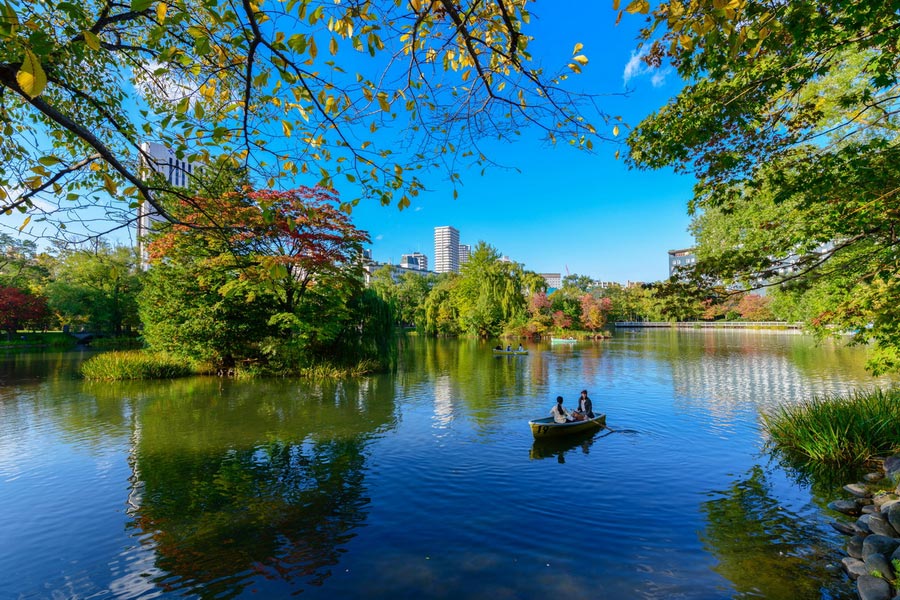
Odori Park
Odori Park, located in the heart of Sapporo, is a must-visit destination. This beautiful urban park, stretching over 1.5 kilometers, represents a serene oasis amidst the bustling city. It features the TV Tower on one side and mountains on the opposite side. You can stroll through the park's lush gardens, take photos of Olympic rings, admire the colorful flower manifestation, and relax by the tranquil pond.
Shiroi Koibito Park
Shiroi Koibito Park is a Sapporo destination you cannot miss during your Japan travel adventure. Children will love this attraction. And here is why. This park is an exhibition of chocolate biscuits. It is a Japanese Charlie and Chocolate factory. The bakery, clock tower, and flowers will be good models for your camera. And, of course, you will have a chance to taste signature Shiroi Koibito cookies, which are white chocolate thin butter cookies.
Moerenuma Park
Moerenuma Park is a large park designed by sculptor Isamu Noguchi in Sapporo, Japan, a 50-minute ride by train or bus from the city center. It showcases an array of sculptures, breathtaking viewpoints, gardens, and walking trails, making it a unique and visually stunning Japanese travel destination.
Nakajima Park
This park, just three stops from the Sapporo downtown, offers sightseers a tranquil oasis decorated with Japanese bridges and surrounded by trees, plants, and an abundance of cherry trees. Visiting the park during winter will make one feel like being in a fairy wonderland. In autumn, Nakajima Park takes the shades of orange, yellow, and red, making it an adorable parade of nature.
Sapporo Hoheykino Onsen
Hoheykino Onsen is a traditional Japanese hot spring in Sapporo city renowned for its therapeutic waters that have healing properties for various health disorders. Experience “zen” in the soothing hot spring baths, enjoy a range of spa treatments, and immerse in the serene ambiance of the onsen.
Shopping in Sapporo
Food is important to Sapporo’s allure. Many restaurants serving the city’s best-known dishes - soup curry, jingisukan, ishikari nabe, zangi (Hokkaido-style Chicken Kaeaage), and Sapporo beer – sit in the central streets, while Nijo Fish Market and Curb Market supply diners with an overwhelmed buffet of seafood from the coast. And, with the appearance of Michelin-star eateries, the capital of Hokkaido attracts more interest from local and international diners. So, where should you shop and eat in Sapporo?
Nijo Fish Market
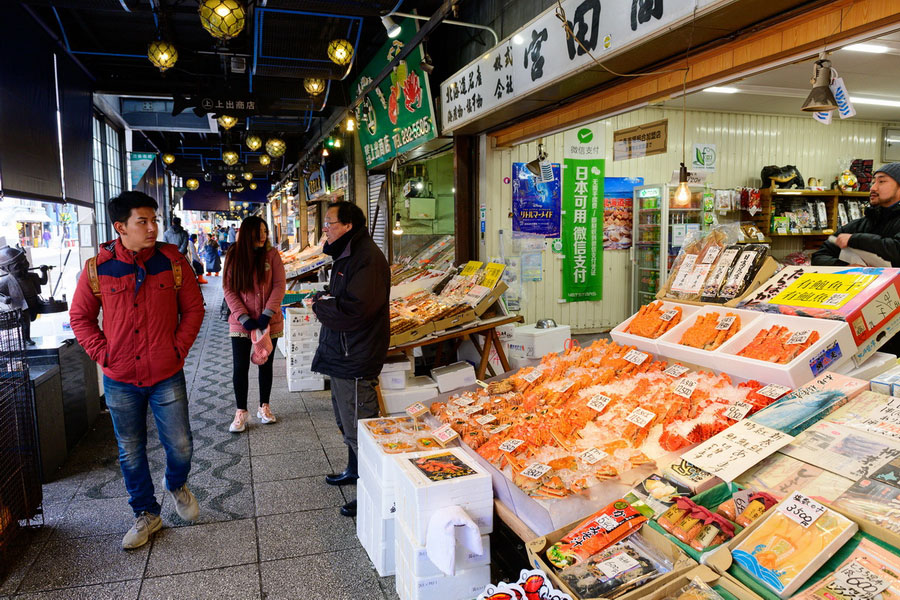
Bustling stalls of Nijo Fish Market and a diverse selection of crabs, scallops, oysters, clams, and other fresh catches are where visitors can immerse themselves in a culinary adventure. Don’t miss the opportunity to indulge in the Hokkaido specialty you can eat on the spot, known as urchin (uni).
Susukino District
Susukino is a vibrant district in Sapporo renowned for its bustling nightlife, shopping, Iconic Nikko Man, and entertainment options. Neon lights at night make it an intriguing place. It is a paradise for food connoisseurs, with a feast of restaurants and bars serving local and international cuisine. Be sure to taste the famous Ramen Yokocho. From traditional Japanese eateries to trendy izakaya, the district offers a diverse culinary experience.
Tanukikoji Shopping Street
Tanukikoji Shopping Center, located in the Susukino district, is a vibrant pedestrian arcade with over 200 shops, restaurants, bars, capsule stores, cafes, and pet stores. The center caters to a unique shopping experience due to its historic charm and modern amenities.
Sapporo Factory
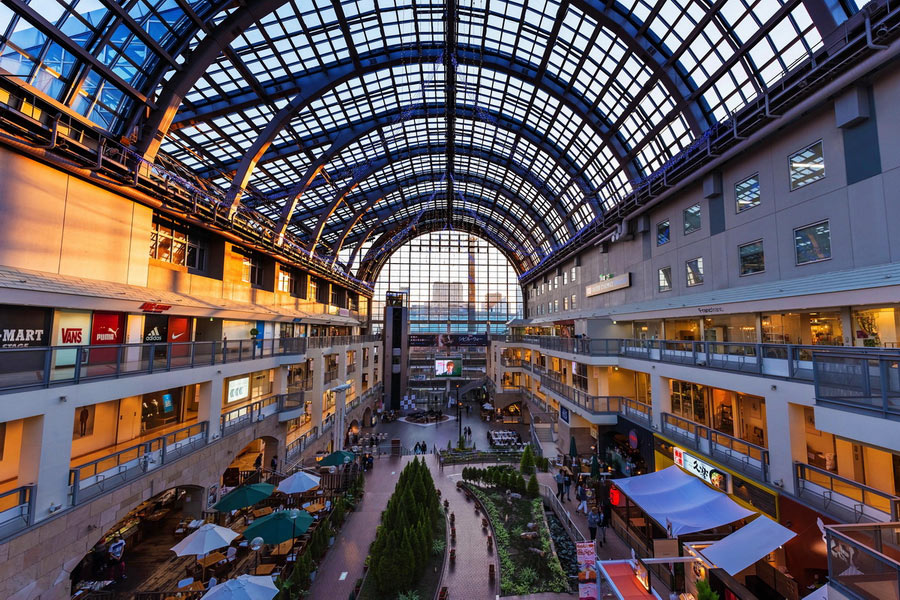
The former beer brewery, the Sapporo Factory, is a shopping mall today that has been running since 1993. Just a 15-minute walk from Odori Park, it is replete with clothing stores, gift shops, cafes, restaurants, and the United Cinema, featuring cinematograph systems like ScreemX, IMAX laser, and 4DX. A small red-brick brewery, Akarenga, has a tasting bar for enjoying beer.
Curb Market
Curb Market is home to around 80 restaurants and stores dotted along several quarters in the suburbs of Sapporo’s Central Wholesale Market. Among the city’s main public markets, the Curb market sells seafood sourced from the Hokkaido shores, such as salmon, sea urchin, scallops, crabs, including sweet potatoes (satsuma-imo), Yubari king melon, and sweet corn (toukibi).
The market’s stalls and shops serve locals and foreigners, with good deals on different products. So, travelers to Sapporo must leverage the opportunity to gorge on fresh seafood dishes at the Curb Market’s many eateries.
Sapporo Dishes to Try
Jingisukan
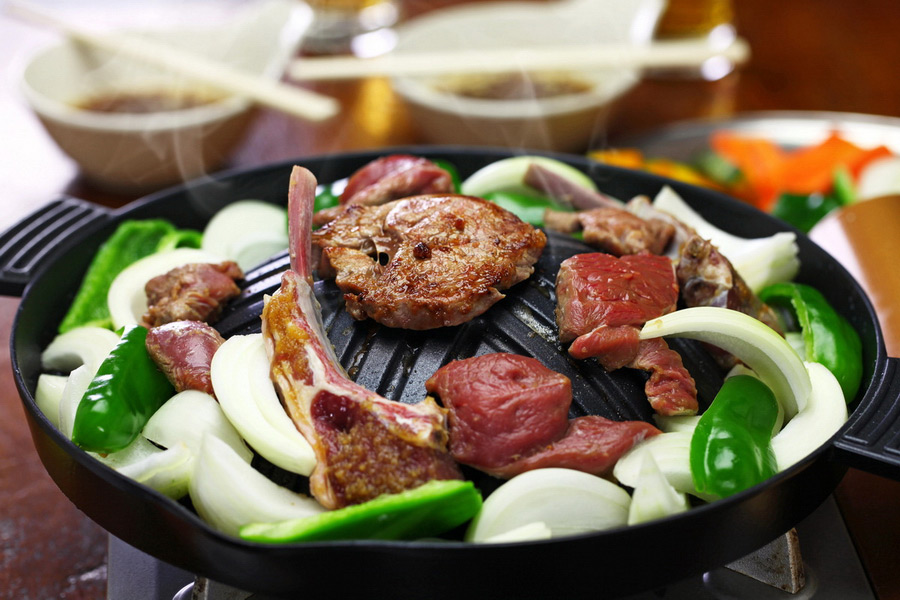
The Japanese name of this grilled mutton dish derives from Genghis Khan. It’s prepared with lamb, incorporating beansprouts, mushrooms, onions, and bell peppers, and served with soy or sake sauce.
Like almost all cities in Japan, Sapporo is home to some of Japan's most delicious food scenes. Here are the top recommendations for a must-try food in Sapporo during your visit.
Soup Curry
Begin your Sapporo culinary mission with the iconic Soup Curry. This soup, made with locally sourced herbs and spices full of veggies and served with rice, will fill and warm up guests on a winter day.
Hokkaido Crab and Sea Urchin
The northern coasts of Hokkaido are a source of diverse seafood. The best to try are crabs and unis. The price tag can be enormous, but tourists can get a good deal at the Sapporo Central Wholesale Market.
Zangi
Hokkaido residents call chicken zangi, while in Japan’s mainland it’s karaage. Both are fried chicken, but the Hokkaido-style chicken is dipped in a thicker batter and marinated more intensely.
Miso or Sapporo Ramen
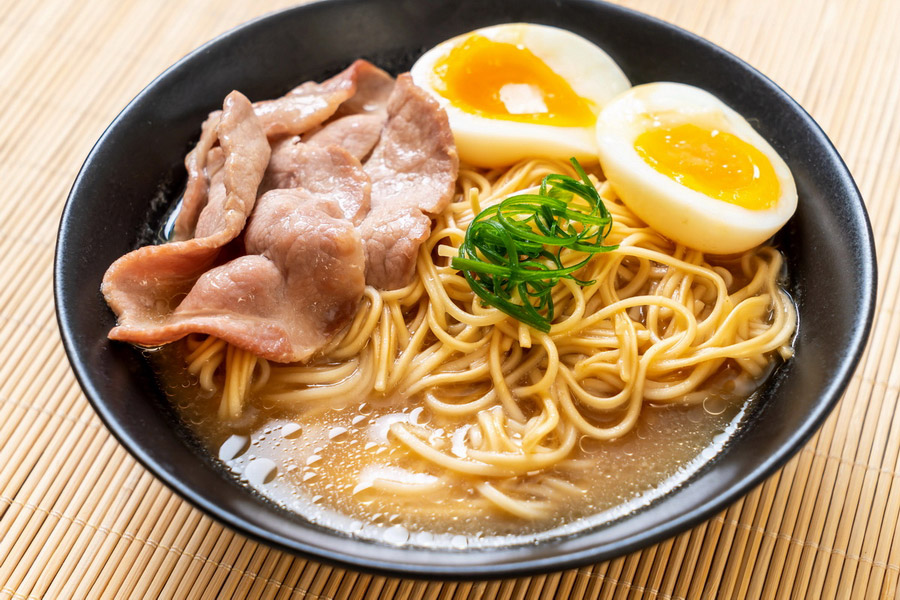
This is another ramen dish – very rich in flavor. Noodles and bean sprouts are cooked in a pork bone broth and topped with pork belly slices, onions, bamboo shoots, boiled eggs, and corn.
Ishikari Nabe
The dishes loved by many today often come about unexpectedly. Perhaps the fishermen of the Ishikari town never imagined what they cooked using whatever was available, including freshly caught salmon, would one day become one of the top Hokkaido foods.
Butter Corn Ramen
Ramen is a popular food in Japan. It can be meaty or only vegetable-based. Seasonal corn and a generous slice of butter are highlights, making it a popular regional meal.
Kaisendon and Sushi
A bowl of rice, along with different seafood and fresh sashimi, is what the kaisendon dish is about. Head to the Nijo Market or the Sapporo Central Wholesale Market to satisfy your seafood craving.
Sapporo Beer
Although Japan is not a country of beer like the Czech Republic, visiting Sapporo and not trying local beer can be a big omission. Why? Because Sapporo has a beer culture stretching back to 1876. The Sapporo Brewery Museum is one of the places to explore the history of local breweries and taste beers.
How to Get to Sapporo – Travel in Japan
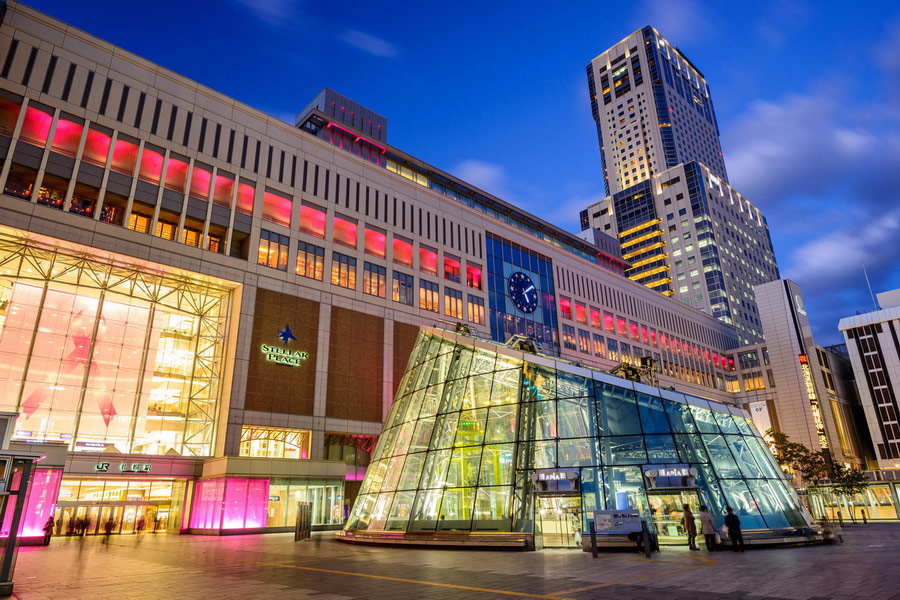
From Tokyo, Sapporo can be reached by Shinkansen train, airplane, or ferry. The fastest way is by plane and train.
Among the top choices for traveling from Tokyo to Sapporo is a flight. Sapporo’s New Chitose Airport accommodates multiple flights from Tokyo airports, such as Haneda and Narita. Many domestic airports also offer direct flights to Sapporo. The railway service, the Airport Express, will get trippers from New Chitose Airport to Sapporo Station in 37 minutes. Other options include airport limousine bus services, car rental, and private airport transfer.
Travelers to Japan can ride the bullet train - Hokkaido Shinkansen in Tokyo - to get to Shin-Hakodate-Hokuto Station and then switch to Express Hokuto to arrive in Sapporo in three and a half hours.
Long-distance ferry services and liners run from different locations on Honshu between Otaru Port, west of Sapporo, and Tomakomai, south of Sapporo. It takes 21 hours for the trip. The train to Sapporo from Tomakomai takes 45 minutes, while it is only 30 minutes from Otaru to Sapporo.
Getting around Sapporo
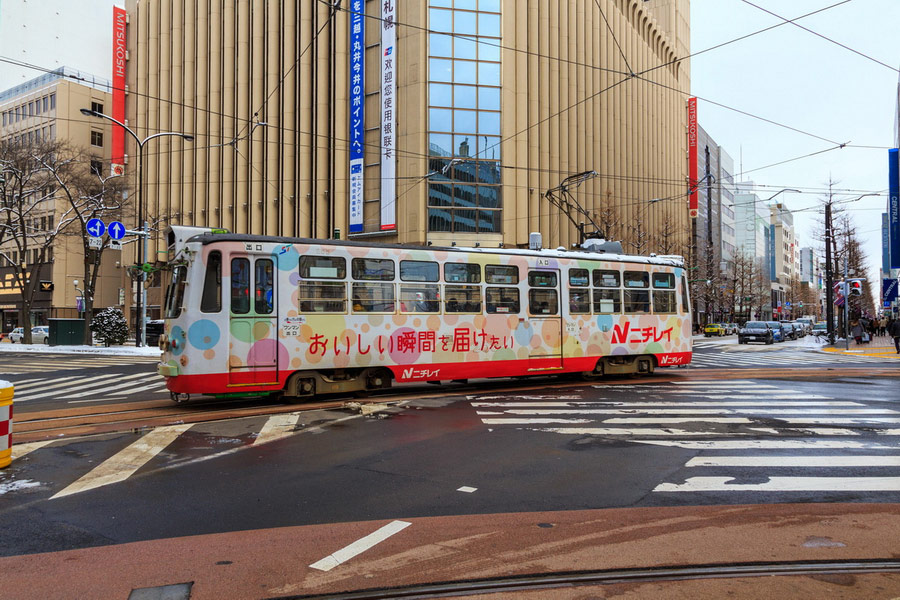
Foreigners don’t need a car to get around Sapporo. The city is foreign-friendly thanks to its rectangular street layout and convenient public transportation network.
Subway
Sapporo subway is the most convenient transportation mode. Subway lines – The Namboku Line (green), the Tozai Line (orange), and the Toho Line (blue) run via or close to many sightseeing spots. Adventurers can switch to buses, trams, and JR trains from the two main hubs, Sapporo Station and Odori Station.
Buses
Another useful way to see Sapporo is by bus. Three bus companies serve the city: Hokkaido Chuo Bus, JR Hokkaido, and Jotetsu Bus. Bus fares vary depending on the route, serving Sapporo from 6:30 AM to 11:30 PM, except for weekends and public holidays when the operational hours may fluctuate.
Railway
Two trains operate above ground in Sapporo. One takes passengers to the coast and Otaru, and the other to Chitose Airport in the east. These lines are the best option for those exploring Hokkaido outside Sapporo. Tourists can purchase 5-day, 7-day, and 10-day rail passes that allow unlimited rides on all JR Hokkaido Lines (except Shinkansen, including the South Hokkaido Railway, the tram, and the subway).
Trams
Decked out in green or wrapped in advertisements, the Sapporo streetcars or trams are easy to spot. The attractions of the most interest to visitors by streetcar are Susukino, Tanuki Koji, Sapporo Mt. Moiwa Ropeway, and Nakajima Park. A One-day Dosanko Pass is a way to hop on a tram and delight in the southwestern area of the Sapporo downtown.
SAPICA and SUICA Cards
Which Japan travel pass will grant newcomers access to most transportation modes in Sapporo? That is, for sure, an IC Card. SAPICA and Kitaca are Sapporo’s smart rechargeable cards that can be used on Sapporo’s subways, buses, and streetcars. But even if you have only a SUICA card or any other IC card, you can get around Sapporo easily.
Taxi
Although getting around Sapporo by taxi can be expensive, it’s a preferred choice to avoid the burden of luggage. They can be hailed on the street or caught in a taxi stand around shopping centers, major landmarks, and attractions. The kogata (small) taxi fare starts at 670 yen for the first 1,463 meters and then 80 yen for every 276 meters.
Bicycles
Porocle is the new bike-sharing offer in Sapporo. So, anyone is welcome to cycle around the city without much effort because Porocle’s bikes are electric. Rental bicycles are available in 60 ports throughout Sapporo 24 hours, seven days a week. One-time members pay only 165 yen per 30 minutes.
Is Sapporo Safe?
In general, it is safe to travel anywhere in Japan, including Sapporo. Sapporo residents are very amiable, especially when it comes to foreigners. Hospitality is everything, and foreigners can expect a great time in the capital of Hokkaido. The same is true for solo female travelers, yet exercising extra caution and common sense will never hurt, particularly when out at night.
As for earthquake and tsunami warnings, follow the alerts of the Japan Meteorological Agency.


